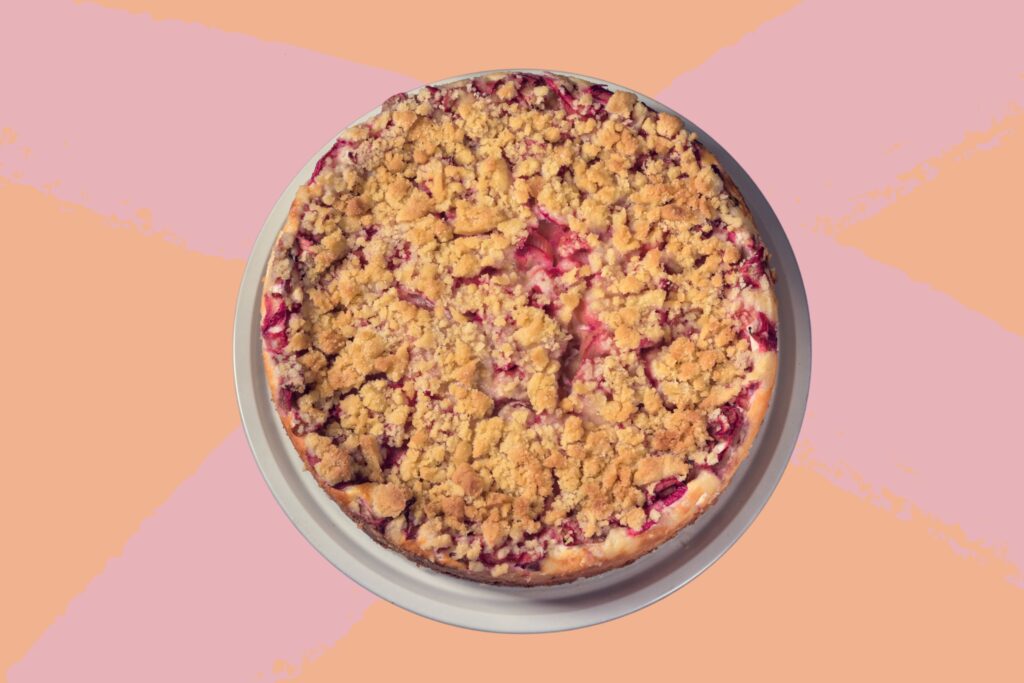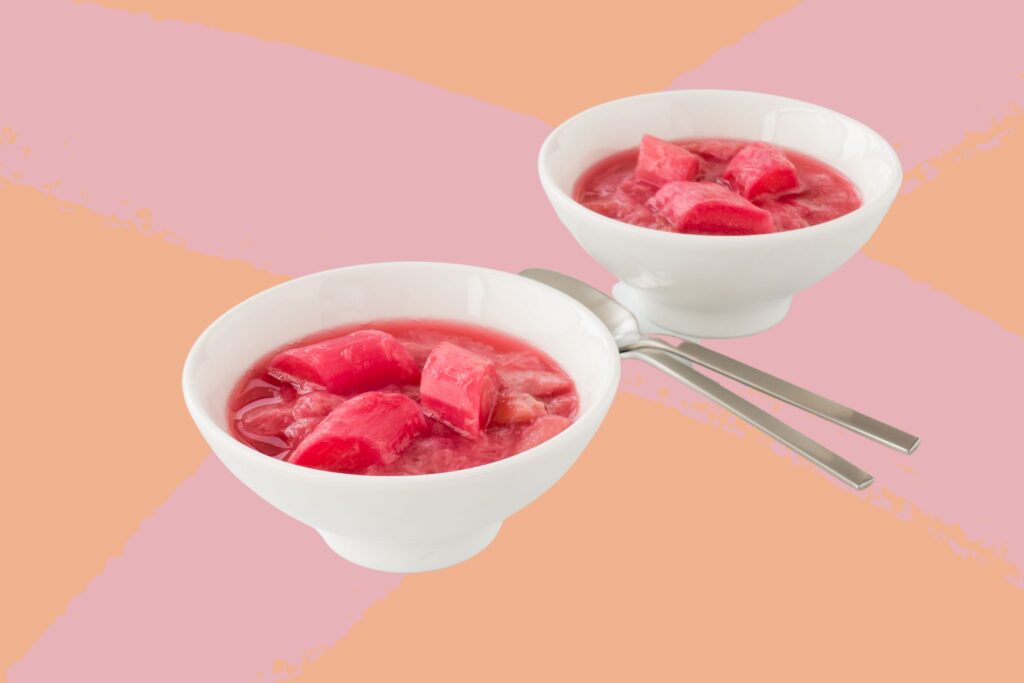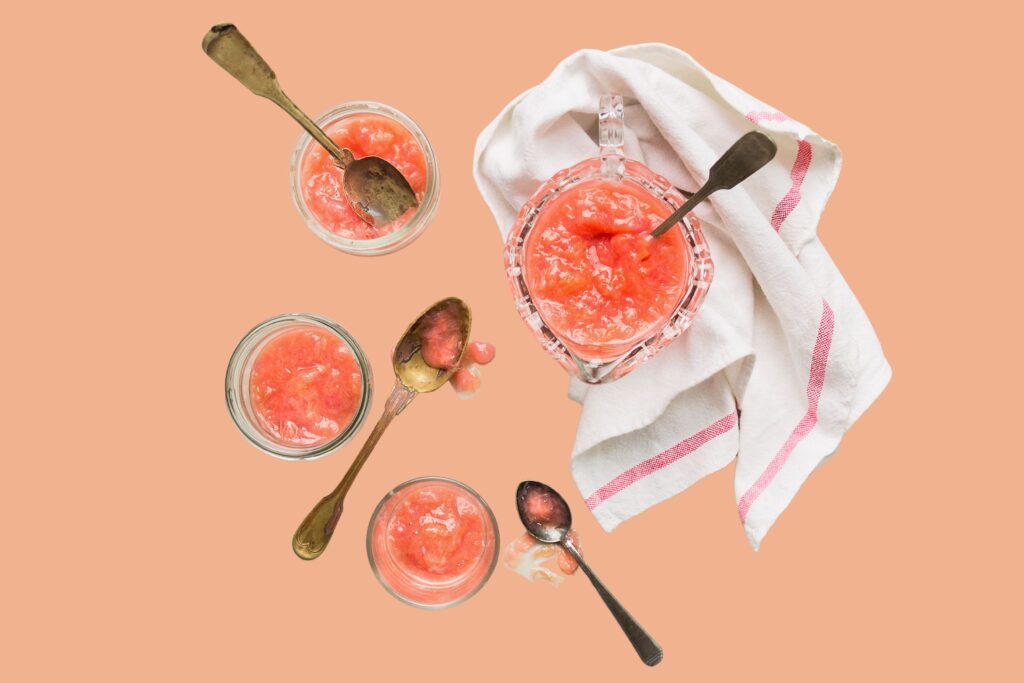Forced rhubarb is highly prized for its unique characteristics and superior taste. Grown in the dark, this vibrant crop produces tender, pale stalks that are sweeter and less sour than traditional rhubarb.
Despite growing without natural light, forced rhubarb retains the same nutritional content as outdoor rhubarb, providing health benefits such as potassium, calcium, and polyphenols. With its fascinating cultivation process and exceptional flavor, forced rhubarb truly stands out as a remarkable English delicacy.
Whether it’s the mouth puckering sourness, ability to pair with the most unlikely of companions, or simply its millennial pink shade, the rhubarb has been enjoying a well earnt surge in popularity in recent years. So without further ado, here are 5 ideal ways to cook with forced rhubarb.
Roast Rhubarb
Ideal in a crumble…

It’s important to note before we get started the leaves of rhubarb are poisonous and should never be eaten. The good news is that forced, as opposed to main crop (in season in Spring), rhubarb doesn’t need to be peeled. Simply wash, then top and tale the stalks.
Who doesn’t love a rhubarb crumble? Whether it’s the headlining act or sharing the bill with apple, raspberries or blackberries, its sour tang and unique flavour bring so much to this British household favourite.
Traditionally, rhubarb would be stewed prior to being baked under a bed of butter, flour and sugar. But roasting the vegetable (yep, not a fruit) first gives it more complexity of flavour and helps retain its beautiful, much sought after pink hue perfectly.
Simply cut the rhubarb into batons, sprinkle with a few tablespoons of water and about double that amount in caster sugar, and roast in a medium to hot oven. The addition of ginger, vanilla extract or orange zest can really enliven things. 10 to 20 minutes in the oven, before adding the crumble, is about right.
Compote
Ideal with a white chocolate tart, on a scone, atop ice cream or custard, and even on your morning cereal…

Because of its astringent quality, rhubarb benefits from a lengthy sojourn in a pan with some sugar and water or orange juice.
Simply cut a few stalks into chunks, find a pan with a hefty bottom and combine the rhubarb with about half its weight in caster sugar and a splash or two of water. Bring to the boil, reduce to a simmer and let it do its thing for around 15 minutes. Check that the rhubarb is soft and giving before removing from the heat.
The addition of star anise, cloves, cinnamon or all three lifts this guy even further. Keep in the fridge with a sealed lid, but serve with the chill taken off.
Pureed
Ideal with duck or mackerel…

Although its shocking pink appearance and its sour, sweet taste make it dessert-friendly, that tartness also means rhubarb is an excellent companion to fatty meats and oil-rich fish. The cooking method is the same as the compote above, but with a final flourish; a blitz in the food processor a pass through a mouli, sieve or chinois, resulting in a smooth, perhaps even glossy, end product. If you want to get ‘cheffy’, then you could use xanthan gum to give your puree better body, structure and shine.
Once you’ve got your puree, you could use it as a base for some delicious, Instagram baiting macaroons.
Pickled
Ideal alongside cheese or charcuterie…
Make use of February’s glut of the good stuff by pickling any excess to enjoy in the months when the pink powerhouse is out of action. You’ll want your pickle mix to err on the sweet side to counteract rhubarb’s inherent sourness.
The proportions should read roughly; 4:2:1, rhubarb to vinegar to caster sugar.
Bring your liquid and sugar to the boil so they make friends, allow to simmer for two minutes then cool. Put pieces of rhubarb in a sterilised Kilner jar and pour to cooled mixture over the top. Seal tightly and place in the fridge for a few days before enjoying. It’ll be good to eat for longer than you can resist finishing it off. Perfect.
If you’re feeling brave, why not try a lacto-ferment for a more complex cure?
Raw
Ideal for being simply dipped in sugar, salt and chilli…
On the streets of Thailand and Vietnam, a popular snack is any sour fruit or vegetable of the season simply dipped salt, sugar or a mix of the two, often combined with ground chilli. Heaven. Rhubarb can be pretty aggressive when eaten raw and unadorned but you might be surprised how moreish it is when given a sparring partner.





